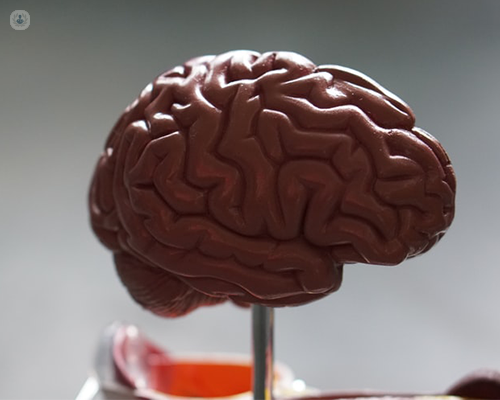What happens during brain surgery for glioma?
Written by:Gliomas, tumours originating in the brain's glial cells, present a complex challenge in the realm of neurosurgery. While surgery is often a primary treatment option, non-invasive techniques like Gamma Knife radiosurgery and radiotherapy have emerged as invaluable tools in the hands of specialists. These treatments offer new hope and effective alternatives for glioma patients. We’ve asked one of our top consultant neurosurgeons, Ms Anna Miserocchi, about the different types of glioma and the types of available treatment options.

What are the different types of glioma?
The three main types of glioma include:
- Astrocytoma – these are the commonest types of glioma brain tumour to occur in adults and children. They appear in any part of the brain and nervous system, including the spinal cord. From astrocyte cells, they regulate electrical impulses in the brain.
- Oligodendroglioma – they develop from oligodendrocyte cells, which insulate nerve cells to help send nerve signals.
- Ependymoma – from ependymal cells that line the cavities of the brain (ventricles).
Gamma Knife Radiosurgery
Gamma Knife radiosurgery stands out as a precise and non-invasive method to treat gliomas. This specialised technique employs focused radiation beams to target and eliminate brain tumours, including gliomas. Expertise in this field ensures the highest standard of care for patients.
Gamma Knife treatment is particularly attractive for its ability to:
- Deliver a concentrated dose of radiation with pinpoint accuracy, minimising damage to surrounding healthy brain tissue.
- Serve as an alternative to conventional surgery, especially when tumour location or other factors make surgery less desirable.
- Complement traditional surgery to address residual tumour tissue, enhancing the odds of a successful outcome.
Radiotherapy
Radiotherapy plays a pivotal role in glioma treatment. This approach harnesses targeted radiation to eliminate cancer cells and curb their growth. It can be employed post-surgery to eradicate any remaining tumour cells or serve as the primary treatment when surgery is not a viable option.
Mastery of radiotherapy guarantees that treatment plans are meticulously tailored to individual patient needs, maximising the prospects of tumour control.
The Combined Approach
In numerous cases, a comprehensive strategy involving surgery, radiotherapy, and Gamma Knife radiosurgery emerges as the optimal treatment plan. This multifaceted approach heightens the likelihood of complete tumour removal, minimises the risk of recurrence, and safeguards critical brain functions.
Glioma treatment is a nuanced and interdisciplinary field. The combined prowess of specialists, armed with advanced techniques such as Gamma Knife radiosurgery and radiotherapy, opens new doors of hope for patients. These advanced modalities promise better outcomes and personalised care for your unique glioma journey.
Gliomas may be formidable adversaries, but with these sophisticated treatments in your corner, the path to recovery becomes clearer.
If you would like to book a consultation with Ms Anna Miserocchi, yo ucan do so today via her Top Doctors profile.


